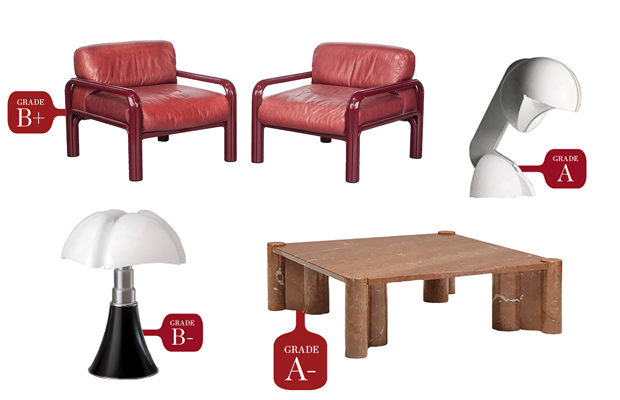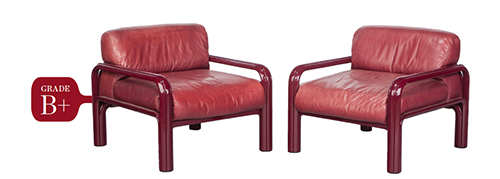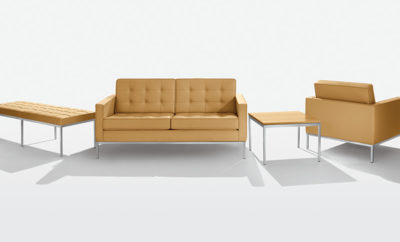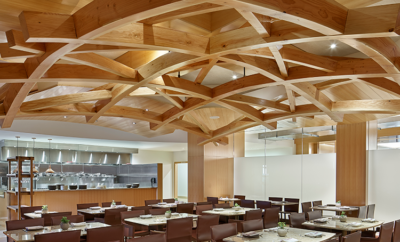 HERITAGE AUCTIONS | COURTESY WRIGHT (2) | ULTRA MODERNE, PARIS
HERITAGE AUCTIONS | COURTESY WRIGHT (2) | ULTRA MODERNE, PARIS
Design
Grading System: Gae Aulenti
TROY SEIDMAN LOOKS AT THE WORK OF THE ITALIAN ARCHITECT AND DESIGNER, WHO, LIKE MANY OF HER FEMALE CONTEMPORARIES IN THE ART AND DESIGN REALM, HAS BEEN DRAMATICALLY UNDERVALUED IN COMPARISON WITH HER MALE COUNTERPARTS
WHILE IT’S NOT A FORMAL MOVEMENT, it has more gravitas than a trend: dealers, curators, scholars, and writers are increasingly dismantling the design canon in order to include or consider more female creators. As I write this, I am in the midst of reading Gail Levin’s impressive biography of Lee Krasner. Just last week, I was blown away by the debut exhibition at Hauser Wirth and Schimmel in Los Angeles, Revolution in the Making: Abstract Sculpture by Women 1947–2016. So a combination of zeitgeist and personal curiosity brings us to the latest subject for Grading System: Gae Aulenti, the accomplished Milanese architect and designer. Both celebrated and debated during her lifetime, in recent years she has fallen from discussions despite a versatile and illustrious career.
After graduating from the Milan Polytechnic School of Architecture, she worked as an art director for a decade at the legendary Italian architecture magazine Casabella. In the 1960s, thanks to the connections she made at the magazine, her career flourished. By the end of the decade she had designed numerous showrooms and retail spaces (including Max Mara in Milan, Dior in Paris, and Fiat in Zurich).
In addition to these interior architecture projects, she also designed lighting and furniture for the best Italian manufacturers, including Kartell, Artemide, Venini, and Zanotta (with several pieces having been conceived for her interiors). In 1969 Aulenti finished the “Home of a Collector” in Milan—one of the first examples of open-concept living. It would lead to many other art-related projects throughout her career, from a large gallery at the Centre Pompidou in Paris to the Asian Art Museum in San Francisco.
Aulenti also had a fruitful relationship with Knoll for more than a decade. She first designed its Boston showroom in 1968, followed by its New York City space the following year. In 1971 Knoll briefly distributed pieces from her (shortlived) Tennis collection of seating and bed frames and subsequently developed the Aulenti Collection, which debuted in 1976, their most successful collaboration.

HERITAGE AUCTIONS
Aulenti Collection for Knoll
KNOLL AND AULENTI’S BIGGEST COLLABORATION was the Aulenti Collection, a suite of sofas, coffee tables, dining/conference tables, and accompanying chairs. Appropriate for both office and residential settings, it remained in production until the 1990s. According to the book Knoll: A Modernist Universe, the pieces were available in a “striking range of colors,” but I’ve only come across examples in black, gunmetal gray, ox blood (many), ivory, and an unfortunate shade of orange reminiscent of processed cheese.
The sofa and chairs have enameled tubular steel frames— composed of four united bent triangular tubes not dissimilar to the quartered acrylic triangle forms that make up the Pipistrello’s shade. The furniture was likely intended to be unobtrusive but exhibit a touch of elegance and confidence and a subtle character not derivative of the Bauhaus—a mentality suggested in much of Aulenti’s practice. Today these pieces are shockingly affordable on the secondary market. A pair of lounge chairs in ox blood with red leather upholstery sold for a paltry $625 at Heritage Auctions in the spring of 2016. While they likely needed to be reupholstered, it is easy to imagine them looking fantastic below a Christopher Wool or Kandinsky painting. And this is the ultimate attribute of Aulenti’s furniture; it looks interesting isolated from its intended context but still complements blue-chip art or a white-collar office.












